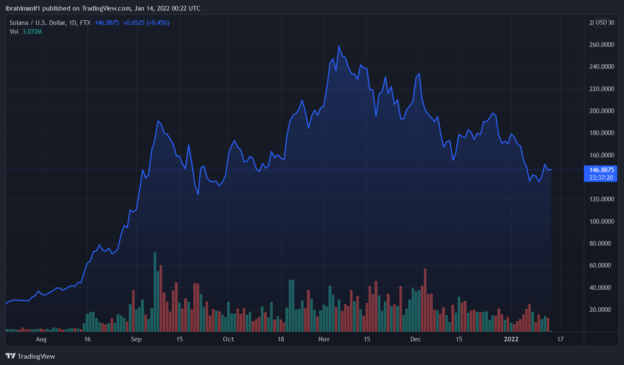New research from Bank of America Reveals Solana might become the “Visa of the digital asset ecosystem.”
Because of its focus on scalability, ease of use, and low transaction costs, the bank stated the Solana blockchain may very well become the equivalent of Visa for the world of cryptocurrencies and NFTs in a research report to its clients after hosting the Solana Foundation’s member Lily Liu.
Solana High Throughput Is It Merit
In a Tuesday research note, Bank of America digital asset strategist Alkesh Shah said that Ethereum competitor Solana may become the “Visa of the digital asset ecosystem.”
The Solana network went live in 2020, and its native token, SOL, has since grown to become the fifth-largest cryptocurrency by market capitalization, with a market worth of $47 billion. It has been used to settle over 50 billion transactions and create over 5.7 million nonfungible tokens, and it is an order of magnitude faster than Ethereum (NFT).
Critics claim that the speed comes at the expense of decentralization and reliability. Shah believes the advantages outweigh the disadvantages:
“Its ability to provide high throughput, low cost and ease of use creates a blockchain optimized for consumer use cases like micropayments, DeFi, NFTs, decentralized networks (Web3) and gaming.”
Bitcoin, the world’s most popular cryptocurrency, is up 3.3% this week. The price of ethereum, its closest rival in terms of market capitalization, increased by 5.3%. Other big cryptocurrencies are also experiencing strong gains. BNB is up 9.5%, cardano is up 16.2%, and Solana is up 10.6%.
Furthermore, Solana has some of the fastest transaction times in the industry. In the note, Shah explained:
“These innovations allow for the processing of an industry-leading ~65,000 transactions per second with average transaction fees of $0.00025 while remaining relatively decentralized and secure.”
Visa now processes 1,700 transactions per second (TPS), however the network has a theoretical capacity of at least 24,000 TPS. On its mainnet, Ethereum currently processes about 12 TPS (more on tier twos), whereas Solana has a theoretical capacity of 65,000 TPS.
Related article | Solana: A Quick Review And Look Ahead
Decentralization trade-offs
In March 2020, Solana was launched as a decentralized blockchain capable of hosting extremely scalable apps. According to Alkesh Shah, it is now the fifth-largest cryptocurrency, having settled more than $50 billion in transactions and generated more than 5.7 million NFTs.
Because both cryptocurrencies allow smart contracts, which are the basic building block of decentralized systems like blockchain-based banks and NFTs, Solana is frequently compared to Ethereum (non-fungible tokens).
Shah conceded, saying, “Solana prioritizes scalability, but a relatively less decentralized and secure blockchain has tradeoffs, illustrated by several network performance issues since inception.”
The cryptocurrency has gotten a lot of attention from investors in the last year, and its price has risen by a whopping 4,000%. Nonetheless, it is dwarfed by its nearest competitor, ethereum. Solana has a market valuation of $47 billion, or little over one-tenth of the size of ethereum.
SOL/USD trades at $146. Source: Tradingview
Solana has had its fair share of network performance issues in recent months, including withdrawal issues confirmed by Binance on Wednesday, reports of delayed performance across social media on Friday, and what appeared to be a distributed denial-of-service attack on Jan. 5, despite Solana’s denial.
Since its start, Solana has settled more than 50 billion transactions, totaling more than $11 billion USD in value locked. It’s also been used to produce over 5.7 million NFTs, demonstrating its focus on consumer applications like money transactions and even gaming.
Related article | Solana Trades Up 15.7%, But Network Issues Raise Concerns
Featured image from Investment U, charts from TradingView.com



